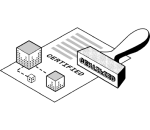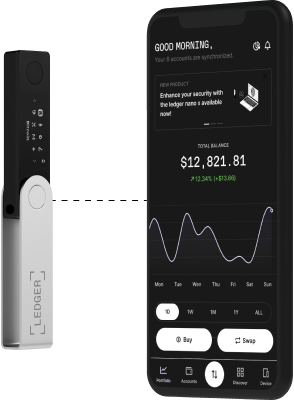Get up to $70 of Bitcoin
EARN REWARDS* BY STAKING YOUR HBAR
Staking your HBAR allows you to passively earn rewards for helping to secure the Hedera network.
Through HashPack Wallet, and by pairing it with your Ledger hardware wallet, you can easily and securely delegate HBAR you want to stake.
You can freely choose a trustworthy validator to get competitive rewards, and you keep ownership of your Hedera (HBAR) coins.

WHY STAKING YOUR HBAR
Hedera Hashgraph is a decentralized blockchain platform that utilizes a variant of the hashgraph consensus algorithm. It offers a secure, fast, and fair infrastructure for building decentralized applications (dApps). The platform uses a network of validators to maintain security and stability, while token holders can participate in governance decisions. The native cryptocurrency of the network is HBAR, and the platform is designed for scalability and public accessibility.
Maximise your HBAR assets
Don't let your HBAR assets gather dust. Put them to work and make them grow with Ledger.
Secure the Hedera network
When you do HBAR staking, you make the Hedera blockchain successful by securing the network and validating transactions.
HBAR STAKING WITH THIRD PARTY WALLET
Secure
Pairing your Ledger with HashPack Wallet, allow you to grow your HBAR bag securely.
Ownership
Keep full custody of your assets when you stake HBAR with HashPack Wallet, unlike with crypto exchanges.
Freedom of choice
It's up to you to choose which validators you want to stake your HBAR too.

Earn HBAR staking rewards
You can passively grow your assets by participating in the Hedera network. By delegating your HBAR to a staking validator, you will receive staking rewards for helping to secure the Hedera network.
The current annual yield on Hedera reward staking is around 6,5%.
You can stop staking your HBAR at any time, the staked Hedera coins remains liquid at all times.
Estimate HBAR rewards
5 STEPS TO START SECURELY STAKING HBAR
Buy a Ledger hardware wallet
Ledger hardware wallets are the smartest way to securely store your HBAR tokens.
Set up your device
Follow the setup steps.
Ledger is your gateway to securely and easily buy, manage, stake, and grow your assets. All in one app.
Create a Hedera Wallet with HashPack
- Unlock your Ledger device and open the Hedera app.
- Go to the HashPack website and select Launch Web App
- Click on the “Connect Hardware Wallet” button.
- Create a password (minimum 12 characters), agree to the terms and conditions, then click Next.
- Click on “Create a new wallet”, then click on “Connect Ledger”. Then select “WebHID”, then click on “Get public key”.
- Choose a staking node in the list then select Next..
- Give your wallet a unique name, select your preferred currency, then click “Create Wallet”
Start staking HBAR
Just by having HBAR in your HashPack Wallet, you'll start staking HBAR automatically. To do so, send HBAR to HashPack Wallet.
- On HashPack Wallet, Select "Receive".
- Select "Copy address to clipboard" then copy the address "With checksum".
- Open Ledger Live, click "Send", paste the address then click "Continue".
- Select the Amount of HBAR to transfer then click "Continue".
- Review the destination address, the amount, fees, and total to debit. If all looks good click "Continue" and press both buttons simultaneously to sign the transactions.
LEDGER LIVE
Other crypto to stake with Ledger

EGLD*
EGLD
MANTRA
OMCARDANO
ADAPolkadot
DOTTron
TRX
Stacks
STX
Mina Protocol
MINAAvalanche
AVAX
Axelar
AXLCronos
CRO
NEO
NEOATOM*
ATOM
Osmosis*
OSMOKusama
KSM
dYdX
DYDX
Casper Network
CSPREthereum
ETHAlgorand
ALGONEAR*
NEARTezos
XTZEOS
EOS
Oasis Network
ROSESolana*
SOL
Internet Computer
ICP*Ledger validator node available
Want to learn more about staking?
We answer all the basic questions you might have in our Ledger academy: What is staking? What’s
the difference
between Proof-of-Stake and Proof-of-Work? What is a validator?
You can also take a look at our School of Block series on Youtube to learn how to get started in staking
and make your
money work for you.

What is staking
Read the article
School Of Block
See our episode about staking
What is proof of stake
Read the article






























